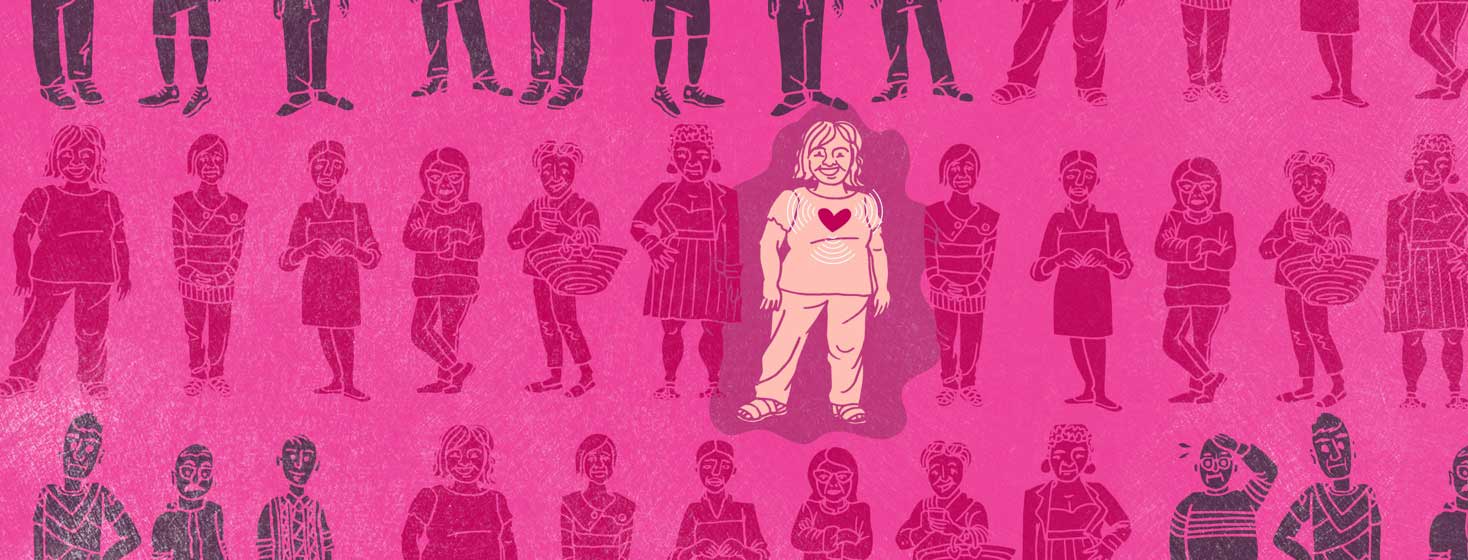Heart Failure in Women
Heart disease is the leading cause of death in women in the US.1-3 More women than men die of heart disease each year. This is due in part to the fact that heart disease and its risk factors are often not noticed in women.3
HF numbers continue to rise
HF numbers continue to rise in the United States.2,4 According to the 2017 American Heart Association (AHA) Heart Disease and Stroke Statistics Update, 6.5 million Americans over age 20 years have heart failure. That number is expected to rise 46 percent to more than 8 million by 2030.1 Further, the survival rate is not changing significantly. 50 percent of those diagnosed with HF are still expected to die within 5 years.1
What is special about women?
Heart failure affects about 3.6 million women, about half of the heart failure population.2-4 There are gender differences in the identification, diagnosis, and management of heart failure. The cardiovascular systems of men and women with heart failure have unique anatomical and physiologic features.1
Types of heart failure
Heart failure is a disease associated with aging. Older women are at greater risk than men.1,4 Sometimes people develop heart failure without any significant decrease in their ejection fraction. This is referred to as diastolic heart failure. Women tend to develop diastolic heart failure rather than systolic heart failure more often than men.
Diastolic heart failure is also known as heart failure with preserved ejection fraction (HFpEF).1-4 HFpEF develops when the left ventricle stiffens and cannot relax between beats. When the ventricles cannot relax, the heart is not able to properly refill with blood. Systolic heart failure describes a weakened heart that cannot contract with enough force to supply the body with oxygenated blood.2
Common causes of HF in women
Common causes of HF, especially in postmenopausal women, include:1
- hypertension (high blood pressure)
- heart valve disease
- diabetes
- coronary artery disease
Some other less common causes include heart infections, history of heart attack, autoimmune disorders, drug side effects, alcohol abuse, smoking, and stress.1
Symptoms of HF in women
Overall, the signs and symptoms of HF are similar between men and women.4 Chest pain is still the most common symptom. People may experience symptoms at rest or when participating in regular daily activities. Key symptoms to be aware of include:1-2
- Uncomfortable pressure, squeezing, fullness or pain in the center of the chest. The pain can last a few minutes or go away and come back.
- Pain or discomfort in one or both arms, the back, neck, jaw, or stomach
- Shortness of breath with or without chest discomfort
- Experiencing a cold sweat, nausea, or lightheadedness
Less common symptoms
But women often have some less-common symptoms including shortness of breath upon exertion (dyspnea), nausea/vomiting, back or jaw pain, and sleep disturbances, and fatigue. Women may have a worse quality of life with heart failure including more difficulty exercising and edema (swelling).1-2
Sometimes heart disease can be “silent”.2 Symptoms can be missed or misinterpreted.4 Doctors need to better recognize the signs of heart failure in women. They should not be distracted or confused by similarities with other illnesses like COPD or asthma.4 Wheezing, coughing, and shortness of breath can be misinterpreted as bronchitis‐like symptoms like bronchial asthma resulting in treatment with nebulizers and inhalers.4
Women are less likely to be referred for specialty care or diagnostic testing than men. Fewer procedures tend to be performed on women. Medical devices, like implantable cardioverter defibrillators (ICDs) and mechanical circulatory support, or procedures including revascularization and cardiac resynchronization therapy (CRT).1
Diagnosis and treatment in women
A diagnosis of HF can often be missed or misinterpreted in women.4 Although the same tests are used for women and men; the results may not be the same.1,4 Doctors tend not to follow the diagnostic and treatment guidelines as closely for women as they do for men.1
For example, normal values for measurements taken when imaging the heart should differ according to gender, age, and body surface area (BSA).4 But these are not always considered according to the report. Biomarkers, like natriuretic peptide levels (BNP) tend to be higher in women than in men and can vary by age.1
Depression is another condition that is common in women with HF and women are more likely to develop heart failure after a heart attack.1,4
Drugs and drug trials
Over 2.2 million women in the United States have received chemotherapy treatment for breast cancer. The toxicity of chemotherapy on the heart is being recognized as a risk factor heart failure in women.2,4
Women are under‐represented in research studies and clinical trials.1-4 The reasons for the low enrollment of women is not clear. But the result has been that advances in HF treatments apply more to men than women.2
Further studies are needed to understand the causes of heart failure and the appropriately targeted treatments for women.1-4 Understanding these gender differences and their impact could affect the future treatment of heart disease in women.4 To help protect your heart, try adopting heart-healthy habits. Eating right, exercise, and getting enough rest, combined with not smoking can improve general health.3
Community Poll
Have you taken our In America Survey yet?

Join the conversation